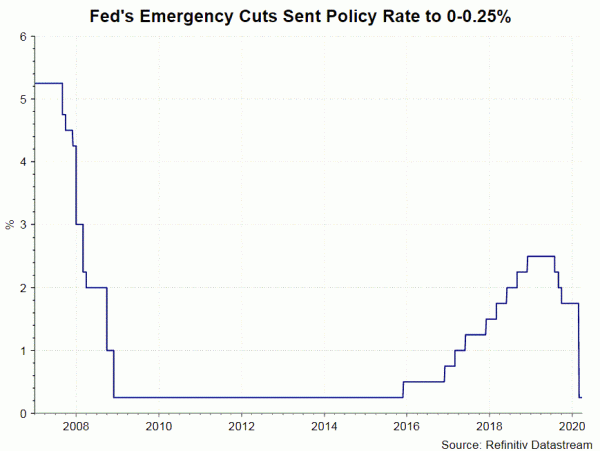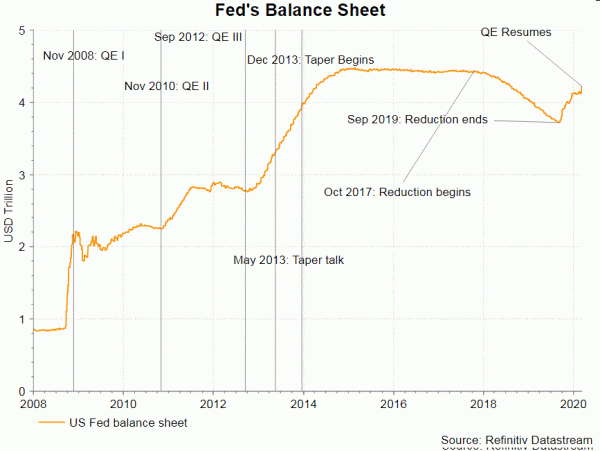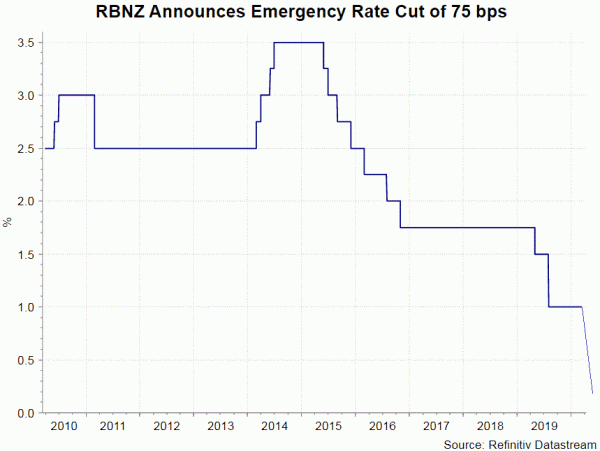In a very surprising move, FOMC has implemented another emergency cut, the second time in two weeks, to combat the negative impacts of the coronavirus outbreak. Originating in China, the virus has officially evolved into a pandemic affecting almost 100 countries and territories in the world.
FOMC board members voted to lower the policy rate by -100 bps to 0-0.25%, sending the rate to the lowest level before the first rate hike in 2015. Besides, the Fed also restarts QE, pledging to buy a total of 700B in US Treasuries and mortgage-backed securities.
The move has come in just two days ahead of the scheduled FOMC meeting, while the size of reduction has doubled that of the emergency cut earlier this month. As noted in the statement, the members pledged to “to maintain this target range until it is confident that the economy has weathered recent events and is on track to achieve its maximum employment and price stability goals”. Cleveland Fed President Loretta Mester dissented against the decision. She preferred a 50bps cut.
Concerning QE, the accompanying noted that the Fed will “increase its holdings of Treasury securities by at least US$500B and its holdings of agency mortgage-backed securities by at least US$200B”. The composition of the Treasury purchases will be set to “support smooth market functioning” and will be “roughly in line with the composition of Treasury securities outstanding”.
The program replaces the previous schedule of purchases of Treasury securities by the New York Fed. As suggested in a separate statement from the New York Fed, buying of Treasury will begin with US$40B today (March 16) and that of MBS of roughly US$80B will be done over the period March 16-April 13.
Separately, RBNZ also announced an emergency cut of the OCR, by 75 bps, to 0.25%. The new interest rate has reached the “lower limit, given the operational readiness of the financial system for very low or negative interest rates”.
As noted in the statement, “it was agreed that, since meeting in February, the outlook for the economy had deteriorated significantly as a result of the impacts of COVID-19”. The members were concerned that “the slowdown in the global economy would act as a serious headwind for the New Zealand economy. International and domestic initiatives to limit the spread of the virus would have a serious impact on travel and trade affecting both supply and demand channels in the economy”.
At the time of writing this report, BOJ is having an emergency meeting, two days ahead of the pre-scheduled meeting on March 18. We expect some easing measures to follow. Currently, BOJ has kept the policy rate a -0.1%. It is also implementing its yield curve control program to keep 10-year JGB yields around 0%.
















